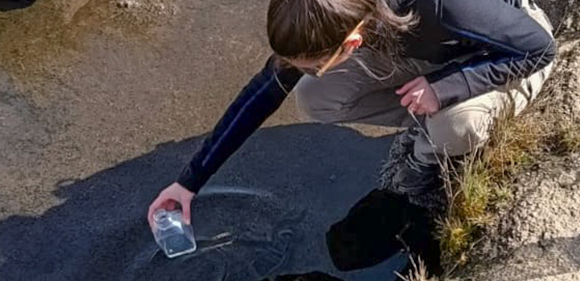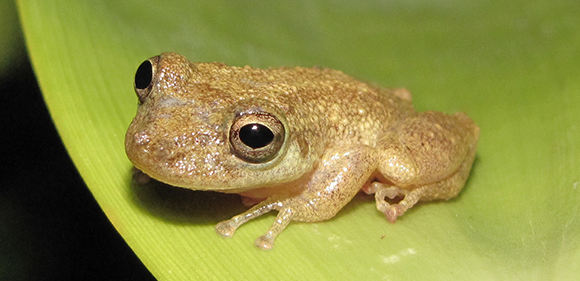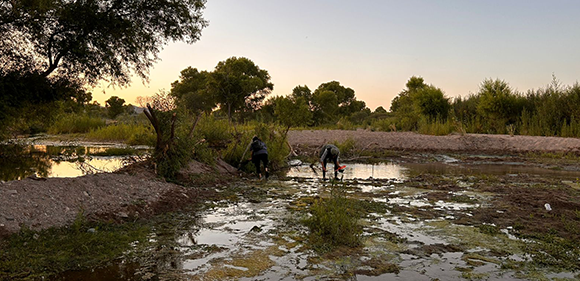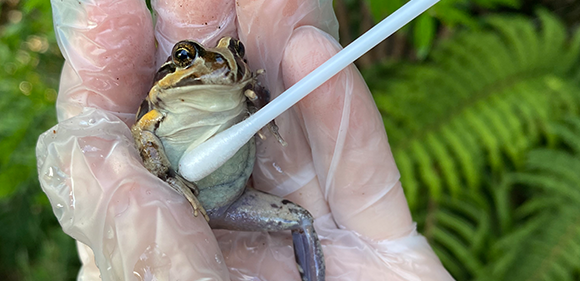Disease Mitigation Grants
The Amphibian Survival Alliance is dedicated to addressing one of the most pressing challenges in amphibian conservation: infectious diseases. Our Disease Mitigation Grants, supported by Synchronicity Earth’s Amphibian Endowment Fund, offer financial backing for projects that aim to develop effective strategies against amphibian diseases. We focus on projects that have the potential for real-world application, especially those that benefit amphibians in lower- and middle-income countries.
We prioritize projects that align with the following:
- Development of disease management strategies
- Research that informs policy on disease mitigation
- Collaborative efforts across scientific and conservation disciplines
- Biosecurity measures to prevent disease spread
Grants of up to $5,000 are available to both organizations and individuals. These grants aim to serve as seed funding, helping projects secure additional financial support.
Information about upcoming grant cycles will be shared as funding becomes available.
Frequently Asked Questions
When the grant cycle opens, an official announcement will be issued where all instructions relevant to the application process will be found. The application package includes the application form, project proposal, project budget, chronogram of activities and letters of support. Once we reach the deadline for applications, these go through a two stage review process where our expert reviewers will evaluate the relevance, impact and feasibility of each proposal. Once the review process is finished, annoucements are made and the process for allocation of funding begins.
Eligibility criteria:
Applicants will be required to provide detailed feedback and reports upon project completion.


Scinax alcatraz (Lutz, 1973) is a species considered Critically Endangered by both Brazilian national and global lists (ICMBio, 2018; IUCN, 2022). This species is endemic in only one place on the planet, the island of Alcatrazes, Brazil. The 10 km² extension of this species’ occurrence is threatened by loss of habitat quality and suffered from its historical use by the Brazilian navy, being the target of bombings until 2013 (Lisboa et al., 2021), when it became a Protected Area in 2016. Efforts to conserve this species are urgent and there is already an ex situ conservation program (Lisboa et al., 2021). The present project intends to investigate whether chytridiomycosis caused by the chytrid fungus Batrachochytrium dendrobatidis (Bd) is a threat that also affects S. alcatraz. We intend to answer the following question: is the population of S. alcatraz infected with the chytrid fungus in nature? Once the prediction that the species is infected with Bd is confirmed, we anticipate the following questions: What is the pattern of prevalence and burden of Bd infection on Alcatraz Island from 2013 to 2023? Which Bd lineages are present in the archipelago and what are the possible dispersal routes involved? This important information can be incorporated in the management of the species and in decision-making, for example, to understand if it is necessary to develop treatments or if this could be a critical point or not for the reintroduction of individuals into the wild in the future.

Due to increasingly drastic anthropogenic changes and the emergence of new pollutants in ecosystems, a better understanding of their interactions and effects on amphibians is critical if we want to mitigate such threats and develop appropriate conservation measures, particularly for species already at risk of extinction. Our long-term goals are 1) to assess the role of pollutants (in sediments and water) associated with the prevalence of infectious diseases (Chytridiomycosis and Ranavirosis) and toxicity (alteration in cell morphology and cell damage) in amphibians, focusing on two abundant amphibian species (Scaphiopus couchii and Lithobates yavapaiensis) and on amphibian species at greater risk of extinction or for which there is no information (Anaxyrus mexicanus, NT = Near Threatened; Craugastor tarahumaraensis, V = Vulnerable; Rana chiricahuensis, V = Vulnerable; Rana tarahumarae, V = Vulnerable; Craugastor occidentalis, DD = Data Deficient; Eleutherodactylus interorbitalis, DD = Data Deficient; Isthmura sierraoccidentalis, NE = not Evaluated; Gastrophryne mazatlanensis, NE = not Evaluated; Incilius mccoyi, NE = not Evaluated) and 2) to develop strategies that will help mitigate the effects of pollution on both the prevalence of pathogens and on the survival of amphibians at risk.

In a wide variety of organisms, the microbiome performs important functions for the host playing key roles in health and defense against pathogens. In amphibians, the skin represents a leading model system for exploring microorganism community structure and its association with their host. In a context of rapid global change, there is a growing interest in understanding how environmental and anthropogenic factors influence the composition of the amphibian skin microbiome, since a disruption in the balance of symbiotic microorganisms (i.e., dysbiosis) may have important consequences on the host’s health and their tolerance to environmental perturbations. In addition, emerging infectious diseases, such as panzootic amphibian chytridiomycosis due to Batrachochytrium dendrobatidis (Bd), emphasize the need to understand the ecology of skin microorganisms and how they are affected by this pathogenic fungus. The amphibian skin microbiome may contain components that provide protection against Bd, and despite the antifungal potential of fungi, most studies have focused on bacteria. The four-eyed frog (Pleurodema thaul) is a widespread amphibian that is distributed over a large latitudinal gradient, which includes diverse climates and human influence. In addition, previous studies show that P. thaul appears to be resistant to chytridiomycosis, which offers the opportunity to potentially obtain bacteria and fungi with an anti-Bd activity. With new molecular techniques becoming more available, Next-generation high-throughput sequencing (NGS) is a useful tool to quickly and efficiently, detect and identify the diversity of bacterial and fungal communities. The main objective of the present thesis was to determine the potential relationships between the richness and evenness of bacterial and fungal communities in the skin of the P. thaul with bioclimatic, anthropogenic factors and Bd infection along a large latitudinal gradient. The results of this study will contribute to generating baseline information towards the future of the impacts on the microbiome and the combination of factors that are critical to shaping the evenness of the bacterial and fungal communities of the skin of amphibians in the context of a changing world. Finally, it is expected that in the near future, isolated fungi will be tested as potential probiotics for mitigation strategies against chytridiomycosis in susceptible and threatened amphibian species.
